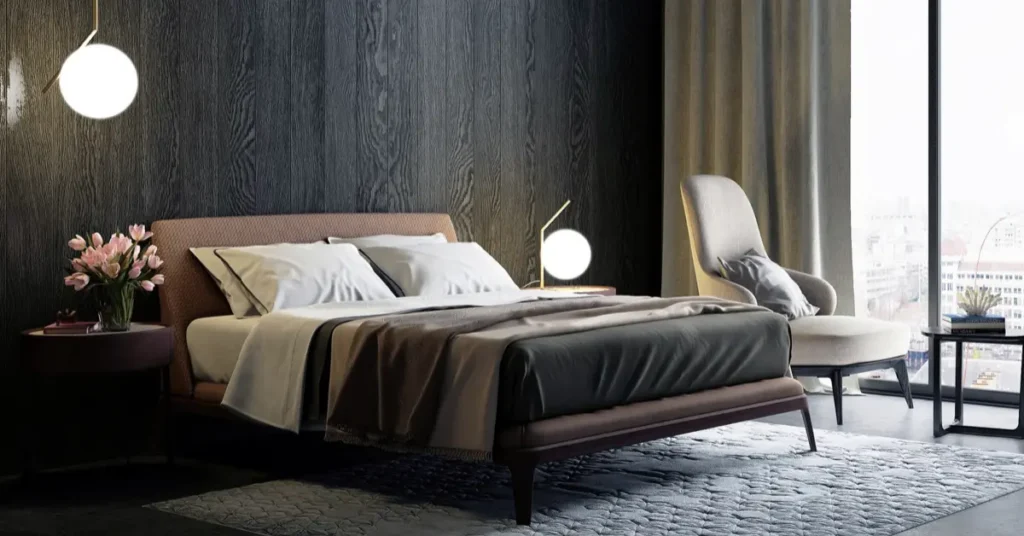Mastering the Art of How to Design a Bedroom as a Interior Designer: A Comprehensive Guide

Designing a bedroom is akin to crafting a sanctuary; it’s not just about aesthetics but also about creating a space that reflects the personality and lifestyle of its inhabitant. As an interior designer, you hold the power to transform a mundane room into a haven of comfort and style. In this comprehensive guide, we delve into the intricacies of bedroom design, exploring everything from layout and color schemes to furniture selection and lighting techniques.
1. Understanding the Client’s Needs
Before diving into the design process, it’s crucial to understand your client’s needs, preferences, and lifestyle. Conduct a thorough consultation to uncover their vision for the space, their daily routines, and any specific requirements they may have. Whether it’s a cozy retreat for relaxation or a multifunctional space for work and rest, aligning the design with the client’s lifestyle ensures a successful outcome.
2. Creating a Functional Layout
The foundation of a well-designed bedroom lies in its layout. Begin by assessing the room’s dimensions and considering factors such as natural light, views, and circulation. Aim to create a functional layout that optimizes space while enhancing comfort and convenience. Experiment with different furniture arrangements to find the perfect balance between functionality and aesthetics.
3. Choosing the Right Color Palette
Color plays a pivotal role in setting the mood and atmosphere of a bedroom. As an interior designer, you have the creative freedom to experiment with various color palettes, from soothing neutrals to bold hues. Consider the psychological effects of different colors and how they can influence mood and perception. For a calming ambiance, opt for soft blues, greens, or earthy tones, while vibrant shades can inject energy and personality into the space.
4. Selecting Furniture and Accessories
When selecting furniture for the bedroom, prioritize comfort, quality, and style. Choose pieces that complement the overall design aesthetic while offering functionality and durability. Pay attention to scale and proportion to ensure that the furniture fits harmoniously within the space. Incorporate elements such as a comfortable mattress, plush bedding, and ample storage solutions to enhance both comfort and functionality.
5. Incorporating Textures and Patterns
Texture and pattern add depth and visual interest to a bedroom design. Experiment with a variety of textures, such as plush carpets, soft fabrics, and tactile finishes, to create a sensory-rich environment. Introduce patterns sparingly to avoid overwhelming the space, opting for subtle accents or statement pieces to add visual intrigue.
6. Layering Lighting for Ambiance
Lighting is a crucial aspect of bedroom design, contributing to both functionality and ambiance. Incorporate a layered lighting scheme that includes ambient, task, and accent lighting to create a versatile and inviting space. Utilize natural light whenever possible, supplementing with overhead fixtures, table lamps, and wall sconces to enhance visibility and create a warm, inviting atmosphere.
7. Personalizing with Décor and Accessories
Personalization is key to creating a truly unique and meaningful bedroom design. Encourage your clients to infuse their personality into the space through carefully curated décor and accessories. Display meaningful artwork, photographs, and mementos that reflect their interests, passions, and memories. Incorporate elements of nature, such as plants or natural materials, to bring a sense of serenity and connection to the outdoors.
8. Ensuring Comfort and Functionality
Above all, prioritize comfort and functionality in every aspect of the bedroom design. Consider the ergonomics of furniture placement, ensuring ease of movement and accessibility. Pay attention to acoustics and thermal comfort, incorporating elements such as rugs and curtains to absorb sound and regulate temperature. By prioritizing comfort and functionality, you can create a bedroom that not only looks beautiful but also feels like a true sanctuary.
Conclusion
Designing a bedroom as an interior designer is a multifaceted process that requires careful consideration of both aesthetics and functionality. By understanding your client’s needs, creating a functional layout, selecting the right color palette and furniture, incorporating texture and lighting, personalizing with décor, and prioritizing comfort and functionality, you can create a space that not only meets but exceeds your client’s expectations. With creativity, attention to detail, and a passion for design, you can transform any bedroom into a haven of style, comfort, and serenity.












